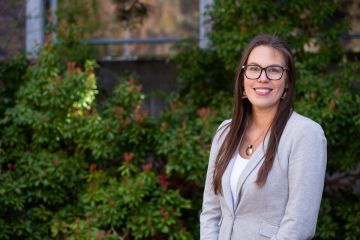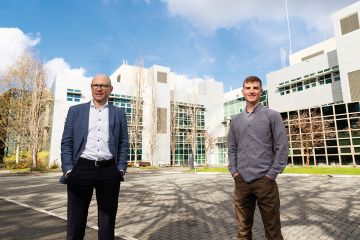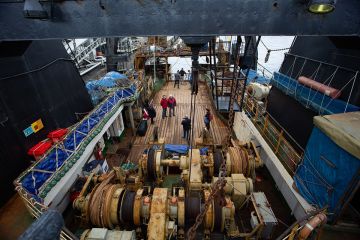The genetic rule for salmon: keep a back-up copy
A 15-year study yields huge potential for salmon management and conservation
Salmon—they’re tasty and nutritious to eat, many livelihoods depend on them and they’re crucial to the health of coastal ecosystems. Turns out they also possess an unusual genetic feature that’s of great interest to evolutionary scientists and fisheries managers alike.
In an article published today in the prestigious journal Nature, an international team of scientists co-led by University of Victoria biologist Ben Koop describes how the Atlantic salmon genome—that’s the complete set of its genes—has made a full backup copy of itself.
“A duplicate genome has massive benefits for adaptability,” says Koop. “It’s likely the reason we have 68 different salmonid species around the world. And it’s the reason our Pacific salmon can adapt to freshwater, saltwater, brackish water and the ocean.”
Genome duplication is nothing new. An ancient duplication 400-500 million years ago gave rise to the huge diversity of vertebrates we see today—birds, amphibians, reptiles and mammals, including us. But in evolutionary terms the salmonid duplication is recent—80-90 million years ago—and therefore much easier to study.
“It’s a rare event that allows us to look at how DNA evolution gives rise to radically diverse animals,” says Koop.
Several years ago, the team became the first in the world to successfully “map” the three billion bits of genetic code that define what it is to be an Atlantic salmon. It was no simple task. The salmon genome is two to three times larger than in most vertebrates. In fact, it’s roughly the same size as the human genome, with about 37,000 genes.
Because all salmonids are about 92 per cent similar at the general DNA-genome level, scientists can take information from one species—in this case the Atlantic salmon—and loosely apply it to all the salmonids.
“This genome duplication provides salmonids with a unique opportunity to dramatically expand the interaction of their genes with their environment,” says Koop. “This natural experiment has some amazing successes and is especially important with today’s rapidly changing climate.”
Koop, who is also the Canada Research Chair in Genomics and Molecular Biology, is one of three founders of the Atlantic salmon genome project, begun 15 years ago with partners in Canada, Chile and Norway. The other co-leaders are Stig Umbolt and Sig Lien from Norway and Willie Davidson from Simon Fraser University. Koop’s lab did a lot of the computational work for the genome assemblies and gene identification.
The result is a fully mapped genome that is openly available to fisheries managers, aquaculture managers and scientists around the world. It can be applied to a wide range of management issues affecting salmonids, including disease, nutrition and growth, stock conservation and climate change.
The Canadian portion of the salmon genome project was funded by Genome BC, with contributions from the Natural Sciences and Engineering Research Council, the Canada Research Chairs program and Compute Canada.
In this story
Keywords: salmon, wildlife, biology, research, genome
People: Ben Koop




